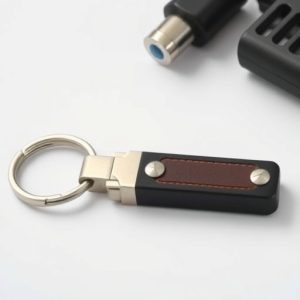Designing Safe & Legal Metal Defense Keychains: A Comprehensive Guide
When designing non-lethal keychain weapons allowed, navigate regional legalities, prioritizing safet…….
When designing non-lethal keychain weapons allowed, navigate regional legalities, prioritizing safety and functionality. Consider material choices like stainless steel for durability, grip mechanics for control, and testing for continuous improvement to meet legal standards while providing effective self-defense solutions.
In today’s world, personal safety is paramount. For those seeking effective self-defense options, metal defense keychains offer a discreet yet potent solution. However, navigating the legalities of non-lethal weapons, like allowed keychains, is crucial before considering their acquisition. This article delves into the essential design principles for creating robust and functional metal defense keychains, focusing on grip mechanics, material selection, and rigorous testing to ensure effectiveness while adhering to legal guidelines regarding non-lethal keychain weapons.
- Understanding Non-Lethal Keychain Weapons Legalities
- Essential Design Principles for Metal Defense Keychains
- Grip Mechanics: Enhancing Ergonomics and Control
- Materials Selection for Durability and Safety
- Testing and Iteration: Ensuring Effectiveness and Mitigating Risks
Understanding Non-Lethal Keychain Weapons Legalities
Before considering a keychain grip design for non-lethal weapons, it’s crucial to understand the legalities surrounding these devices. Non-lethal keychain weapons, also known as personal defense keychains, vary significantly in terms of legality across different regions. Some areas allow their use only for self-defense inside one’s own home, while others permit them in public spaces with specific restrictions. It’s essential to check local and state laws to ensure that the designed product complies with regulations regarding non-lethal force tools.
Understanding these legalities is vital to prevent accidental criminalization of your invention. In many jurisdictions, non-lethal weapons must be made from non-deadly materials and have limitations on their power and range to be considered legal. Additionally, certain features like safety mechanisms and proper training requirements for users may be mandated by law. Staying informed about these regulations will help ensure that your keychain grip design not only serves its intended purpose but also adheres to the legal framework governing non-lethal personal defense tools.
Essential Design Principles for Metal Defense Keychains
When designing metal defense keychains, it’s crucial to balance functionality with safety, especially considering the legal implications of non-lethal keychain weapons allowed in various jurisdictions. Firstly, focus on a robust yet ergonomic design that ensures a firm grip and easy handling. The keychain should be crafted from durable materials like high-grade stainless steel or titanium to withstand frequent use and maintain its integrity.
Additionally, prioritizing user safety is paramount. Incorporate features that prevent accidental activation, such as a reliable locking mechanism or a smart trigger design. Remember, the goal is to provide a practical self-defense tool while adhering to legal guidelines on non-lethal keychain weapons allowed for personal use.
Grip Mechanics: Enhancing Ergonomics and Control
Grip Mechanics play a crucial role in designing non-lethal keychain weapons, especially when considering their intended use as self-defense tools. Enhancing ergonomics ensures that users can maintain control and reduce strain during sudden or intense situations. A well-designed grip allows for a secure and comfortable hold, enabling swift and precise movements. This is particularly important given that many self-defense scenarios require quick reactions and accurate targeting.
For instance, incorporating textured surfaces or ergonomic shapes into the keychain grip can significantly improve user control. These features can prevent slipping, even when grasped tightly during high-stress situations, ensuring users can deploy their weapon effectively while allowed under relevant laws regarding non-lethal keychain weapons.
Materials Selection for Durability and Safety
When designing a metal defense keychain, material selection is paramount for both durability and safety, especially considering the potential for self-defense in public spaces. Opting for high-quality metals like stainless steel or aluminum ensures resilience against daily wear and tear. These materials are resistant to corrosion, ensuring your keychain maintains its structural integrity over time. Additionally, they offer a solid foundation for effective grip and control during use, making them suitable choices for non-lethal keychain weapons allowed in various public settings.
Safety features should also be integrated into the design. For instance, incorporating a slip-resistant surface can enhance the user’s grasp, preventing accidental drops or dislodging of the keychain from its intended carry location. Moreover, considering impact resistance ensures that the keychain can withstand the force applied during self-defense scenarios without compromising its structural soundness. These safety considerations are crucial in promoting responsible and effective use, aligning with the legal and ethical implications of carrying non-lethal personal defense tools in public.
Testing and Iteration: Ensuring Effectiveness and Mitigating Risks
In the realm of self-defense tools, especially non-lethal keychain weapons allowed, continuous testing and iteration are vital to ensure effectiveness and mitigate risks. It’s essential to simulate various scenarios during development to understand how users will interact with and employ the device in real-life situations. This process involves rigorous testing under controlled conditions, taking into account factors like grip strength, durability, and ease of deployment. Each test provides valuable data that informs design refinements, making the final product more reliable and safer for its intended purpose.
By embracing a culture of ongoing improvement, designers can address potential issues early on, enhancing both performance and user satisfaction. This iterative approach is crucial in developing non-lethal keychain weapons that are not only effective deterrents but also reliable tools when every second counts.
Creating an effective metal defense keychain requires a deep understanding of both design principles and legal considerations. By adhering to essential design rules, focusing on grip mechanics for enhanced control, and carefully selecting materials for durability and safety, you can develop a non-lethal keychain weapon that is both functional and legally allowed in many jurisdictions. Remember, thorough testing and iteration are key to ensuring its effectiveness while mitigating potential risks.


